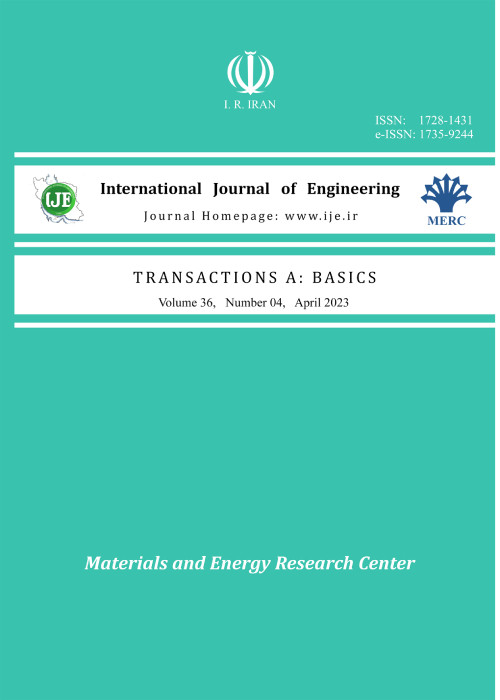Performance of a Two-stages Gas Gun: Experimental, Analytical and Numerical Analysis
Author(s):
Article Type:
Research/Original Article (دارای رتبه معتبر)
Abstract:
Two stages gas guns are used for various purposes, particularly for mechanical characterization of materials at high rate of deformations. The performance of a two stages gas gun is studied in this work using the theory of the two-stage gas gun proposed by Rajesh, numerical simulation using combined Eulerian/ Lagrangian elements in Autodyna commercial code and experiment using a two stage gas gun developed by the authors of this study. Equations governing the motion of the piston and projectile are solved using Runge-Kutta method. The effects of parameters such as chamber pressure, pump tube pressure and piston mass on the performance of gun are explored. The results of numerical simulation and analytical methods are validated by experiment. Finally, a comparison between the analytical, numerical and experimental results shows that the theory proposed by Rajesh, yields reasonable predictions for the two stage gas gun performance in the first place, and Autodyn software, using combined Eulerian/ Lagrangian elements, gives accurate estimations for gas gun parameters, in the second place. A 3-D working diagram is provided for prediction of projectile velocity for any state of pump and chamber pressures which are the most important variables for a gas gun with a fixed geometry. Two stages gas guns are used for various purposes, particularly for mechanical characterization of materials at high rate of deformations. The performance of a two stages gas gun is studied in this work using the theory of the two-stage gas gun proposed by Rajesh, numerical simulation using combined Eulerian/ Lagrangian elements in Autodyna commercial code and experiment using a two stage gas gun developed by the authors of this study. Equations governing the motion of the piston and projectile are solved using Runge-Kutta method. The effects of parameters such as chamber pressure, pump tube pressure and piston mass on the performance of gun are explored. The results of numerical simulation and analytical methods are validated by experiment. Finally, a comparison between the analytical, numerical and experimental results shows that the theory proposed by Rajesh, yields reasonable predictions for the two stage gas gun performance in the first place, and Autodyn software, using combined Eulerian/ Lagrangian elements, gives accurate estimations for gas gun parameters, in the second place. A 3-D working diagram is provided for prediction of projectile velocity for any state of pump and chamber pressures which are the most important variables for a gas gun with a fixed geometry.
Keywords:
Language:
English
Published:
International Journal of Engineering, Volume:32 Issue: 5, May 2019
Pages:
759 to 768
magiran.com/p1979489
دانلود و مطالعه متن این مقاله با یکی از روشهای زیر امکان پذیر است:
اشتراک شخصی
با عضویت و پرداخت آنلاین حق اشتراک یکساله به مبلغ 1,390,000ريال میتوانید 70 عنوان مطلب دانلود کنید!
اشتراک سازمانی
به کتابخانه دانشگاه یا محل کار خود پیشنهاد کنید تا اشتراک سازمانی این پایگاه را برای دسترسی نامحدود همه کاربران به متن مطالب تهیه نمایند!
توجه!
- حق عضویت دریافتی صرف حمایت از نشریات عضو و نگهداری، تکمیل و توسعه مگیران میشود.
- پرداخت حق اشتراک و دانلود مقالات اجازه بازنشر آن در سایر رسانههای چاپی و دیجیتال را به کاربر نمیدهد.
دسترسی سراسری کاربران دانشگاه پیام نور!
اعضای هیئت علمی و دانشجویان دانشگاه پیام نور در سراسر کشور، در صورت ثبت نام با ایمیل دانشگاهی، تا پایان فروردین ماه 1403 به مقالات سایت دسترسی خواهند داشت!
In order to view content subscription is required
Personal subscription
Subscribe magiran.com for 70 € euros via PayPal and download 70 articles during a year.
Organization subscription
Please contact us to subscribe your university or library for unlimited access!


